 |
Setting up an Internal Cardiac Coherence (ICC) session
Setting up a CardioGem session is very easy. The only thing needed is a convenient place to sit. Connect your client to the CardioGem using (sports type) wrist straps, and apply the gel-free electrodes underneath. Open the software and click on the start button at the top left to start a new session.
For your client a chair with good back and arm support is recommended. Leaning back a little can help. Ask them to relax a bit, especially to relax their shoulders and arms to avoid muscle artifacts. They don't need to close their eyes, or to breathe slowly, or to think of anything special. Some talking is fine, depending of the purpose of the session. Looking at the screen during a session however is generally not recommended, unless you want to introduce your client to how their heartbeat and breathing response (RSI) look on the screen. This can be very re-assuring and just fun, especially during an introduction.
|
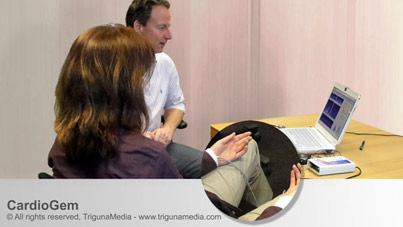 Once your client is hooked up to the CardioGem, you can continuously verify your personal impressions
with the sensitive Internal Cardiac Coherence responses... Once your client is hooked up to the CardioGem, you can continuously verify your personal impressions
with the sensitive Internal Cardiac Coherence responses... |
Interpreting an Internal Cardiac Coherence session
Six characteristic CardioGem sessions will be discussed. But first some preliminary notes. As a therapist or trainer you want to be able to give a real rich and valuable interpretation of a CarioGem session, to get the maximum out of it for your patient or client and for yourself. A few things are important:
Interpreting a CardioGem ICC Session: 7 things to know:
|
- People. The CardioGem is a machine - a very subtle one, but nevertheless. The CardioGem, and Internal Cardiac Coherence (ICC) diagnosis and training in general, are NOT a replacement for human interaction. It is however a very valuable help with diagnosis and training. Firstly because of the unique and very basic psycho-physiological principles (functional coherence states), which all by themselves can help to make the dialogue very transparant. And of course because of the actual measurements can be done to confirm these principles.
|
- The funcational psycho-physiological coherence states. The ICC type of diagnosis and entrainment are rather subtle, or transformational. It is all about getting intuitional with your client's psychic states associated with emotional and mental coherence. These states are definitely not "abstract" - they are:
- The concrete causes (or "subjective attractors") of respectively emotional coherence and heartfelt communication, and of focused intent and individual competence. Or as one CardioGem therapist put it: ICC takes you to the place where great thoughs and feelings are born..
- The concrete sources of motivation and emotional strength. Note: this together lies encoded within the sub-wave fluctuations of the so called "autonomic output" (output of the Autonomic Nervous System or ANS).
Different levels and types of personal experience are realized through these supra-mental or transpersonal states. Understanding how well your client responds to these inner resources, and how close they get to utilizing it, is the basis of assessing their state of mind, and how you might want to improve it. It requires the skills, experience and enthousiasm from you as a therapist, coach, trainer or teacher, to feel and understand how these measurable and entrainable states play a role in each of your clients life experiences, and how this relates to their questions and their personal challenges.
|
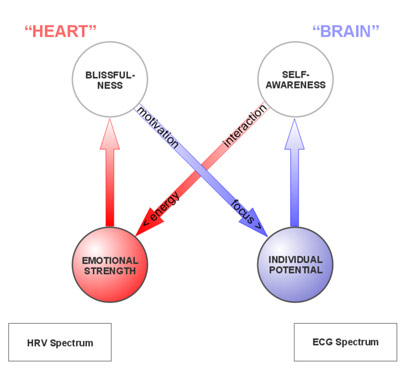 |
- The self-reinforcing autonomic cycle of the ANS. This is your practical working model and reference. It is a revolutionary approach based on relatively contemporary concepts in the field of bio-psychology and fully corroborated by research of Institute of Heart Math. The autonomic cycle provides the dynamic connection between personal (mental and emotional) experience and its true source, the internal coherence states. It is a revolutionary, but proven approach which also solves certain knotty philosophical issues which were never solved in classical philosophy or by contemporary science.
|
- The diagnostic process flow. This means understanding, on an intellectual level, but also intuitionally, what you are measuring and what it means. This is not something you can learn merely from reading - it needs personal practice and experience to get the right touch and feel. There is usually much more to an Internal Cardiac Coherence session than initially meets the eye. In other words, there is more between heaven and earth than simply being "less coherent" or "more coherent". The two main focus points during an ICC diagnostic session are, respectively:
- Check your client's Heart Rate Variability (HRV) level. Roughly, the HRV can either be healthy, or very low, or very high. In the very low or very high cases, there is little chance of good ICC. In other words, in that case a person is not coherently and efficiently utilizing their subtle, inner resources. There is typically less focused stamina and consistent self-motivation. Therefore, checking the HRV level is a basic assessment. Good HRV is clinically associated with physical health and longevity, low HRV all too often with the opposite!
- Once you have made sure that the HRV is healthy, you can move on to a deeper level of assessment, based on the subtle harmonics of the ECG and HRV spectra. Healthy HRV is by itself not automatically a guarantee for Internal Coherence (if that would be the case, the ICC assessment would be trivial)! In ICC diagnostics there are three diagnostic levels:
- Check the occurences of transient internal coherence states (brief ICC peaks). This indicates a person's responsiveness to external or internal, conscious or sub-conscious suggestions that truly move and inspire them. This is a dynamic use of internal coherence , for example during psycho-therapy. It is also a first indication of general ICC.
|
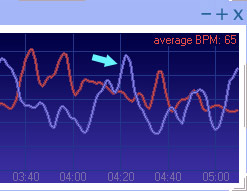 |
- Check the general / average ICC level. This can be tricky. Namely, if the HRV is (very) low, this itself will also cause "high ICC levels". In this case however, it is not true ICC - it's a "false flag"..!. Healthy HRV is an essential basis for healthy ICC! A healthy general ICC level indicates that a person is generally in tune with his higher (or just as well, deeper..) resources. He or she is not merely defined and motivated by their immediate physical and psycho-physical needs. Their psychology is at least in part based on greater thoughts and feelings, and the sense of empathy, strength and self-motivation that comes along with it. And as a therapist or trainer you aim to be with them on that level. You will think and feel on that level and work with them on that level. You do not feel the need to translate ICC back into classical "evidence based" contexts. You speak the language of internal coherence and understand the psychology. It remains a personal human experience.
|
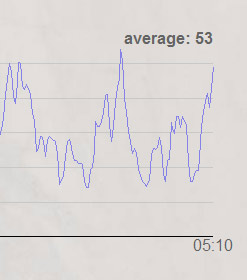 |
- Check the Dynamic Index. This is the integral evaluation on a scale of 0 - 100% of an entire internal coherence session. The CardioGem can do this automatically for you! As always with summaries, valuable information of the steps leading to that final number get lost. That's the price of convenience. Nevertheless the Dynamic Index produces a far more precise final evaluation than can be expected purely from visual interpretation of the previous stages. The Dynamic Index does not reflect the sheer amount of internal coherence as such. Instead it is a measure of how naturally and efficiently a person integrates ICC in their daily life and individual experience. In other words, it is indicative of the equilibrium between "transcendence" and "practicality". Hence it is a realistic indication of how excellently a person lives their life! Importantly, a good final assessment, automatically means that the HRV is healthy! Too high or too HRV always results in a lower Dynamic Index. Yet, as a dedicated therapist or trainer, you should not aim to rely on the final result only, but also fully appreciate the subsequent steps leading to it.
|
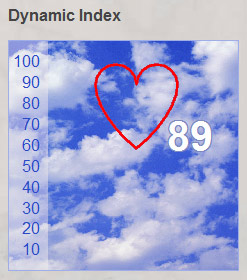 |
|
- How to evaluate (and not only rely on the automatic "Dynamic Index"). Relate a CardioGem session to how you perceive a person, to their specific questions, needs or health issues, and to their ambitions and training targets. Integrate what you have learned about the meaning of HRV level, transient coherence states, the general coherence level, the Autonomic Cycle and the Dynamic Index, and relate that to your and their personal experience. The more experienced you are at that, the more you can get out of your CardioGem - in a way, there are no limits! Learn by practice to get intuitional with the subtler, empowering psycho-physiological states in yourself and in your clients. Learn what it truly means. You don't need to be a top-notch empath or intellectual genius to feel and understand it, but a certain amount of training, skill and subtle awareness greatly helps.
|
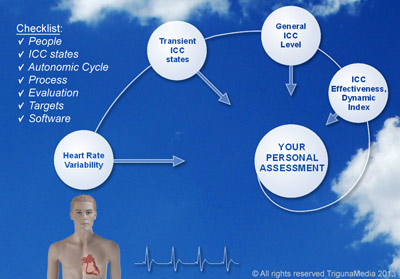 |
- How to match your available practice time with the diagnostic and training goals. What do you want to achieve? Are you a therapist, a psychiatrist, or a personal or organisational coach? In what setting are you working, and of what kind of clients do you have? What is the available and / or required time? There are different ways you can choose to how to work with internal coherence analysis and training, in different circumstances and for different purposes. To define how you want to integrate ICC in your therapy, training or coaching practice, below schedule can serve as a practical guide:
|
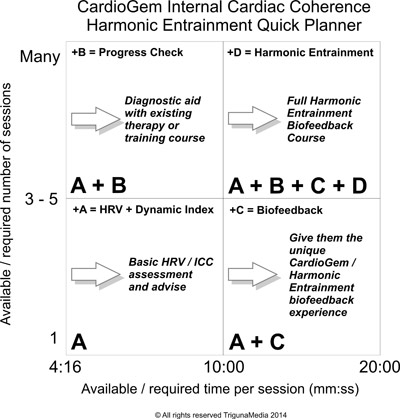 |
- Finally: the program! Everything you need to know about the use of the hard- en software ("which buttons to click") is found in the userguide, which is accessible in the software itself (click Help in the main menu) or in your program folder (in the "UserGuide" folder). Just for a brief synoposis here, the main topics are:
- Main user interactions: use of the menus and starting or stopping a session. Discussion of the diagnostic modules: Raw ECG data, ECG spectrum, ECG coherence (ICC), Heartrate (tacho) and ICC history. The evaluation options in the Quick Scan: basic HRV analysis and Dynamic Index final evaluation
|
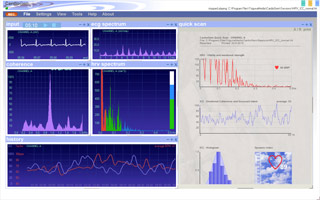 |
- The biofeedback environment and its different modes and settings
|
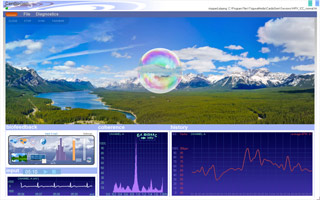 |
|
|
|

|
|
|

|
 |
|
|
